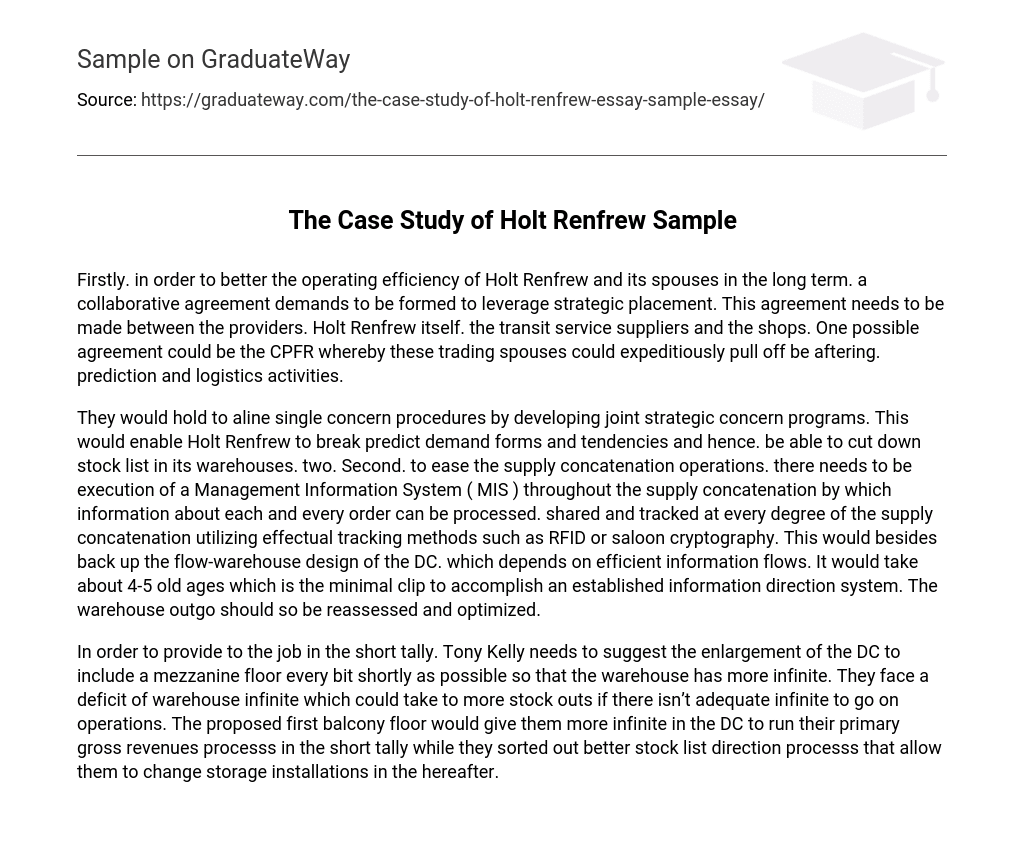Firstly, to improve the long-term operating efficiency of Holt Renfrew and its partners, a collaborative agreement must be established to leverage strategic placement. This agreement should involve the providers, Holt Renfrew itself, the transit service suppliers, and the shops. One potential agreement could be the CPFR, which enables these trading partners to efficiently manage planning, forecasting, and logistics activities.
The primary goal is to implement joint strategic business plans in order to streamline procedures within a single concern. This implementation would help Holt Renfrew improve their ability to anticipate demand patterns and reduce inventory in their warehouses. Additionally, the supply chain should incorporate a Management Information System (MIS) to facilitate operations. The MIS would enable information processing, sharing, and tracking for each order at every level of the supply chain. To track effectively, RFID or bar coding methods should be utilized. These steps would also support the flow-warehouse design of the Distribution Center (DC), which relies on efficient information flows. Implementing this MIS would require approximately 4-5 years to establish a comprehensive information management system. Following this, warehouse expenses should be reevaluated and optimized.
To quickly address the warehouse’s need for more space, Tony Kelly should propose adding a mezzanine floor to the DC immediately. Currently, there is a shortage of warehouse space, which could lead to more stock outs if operations cannot continue due to lack of room. By adding a mezzanine floor, the DC will gain extra space to support their primary sales processes in the short term and also enhance inventory management procedures by adjusting storage facilities in the future.





